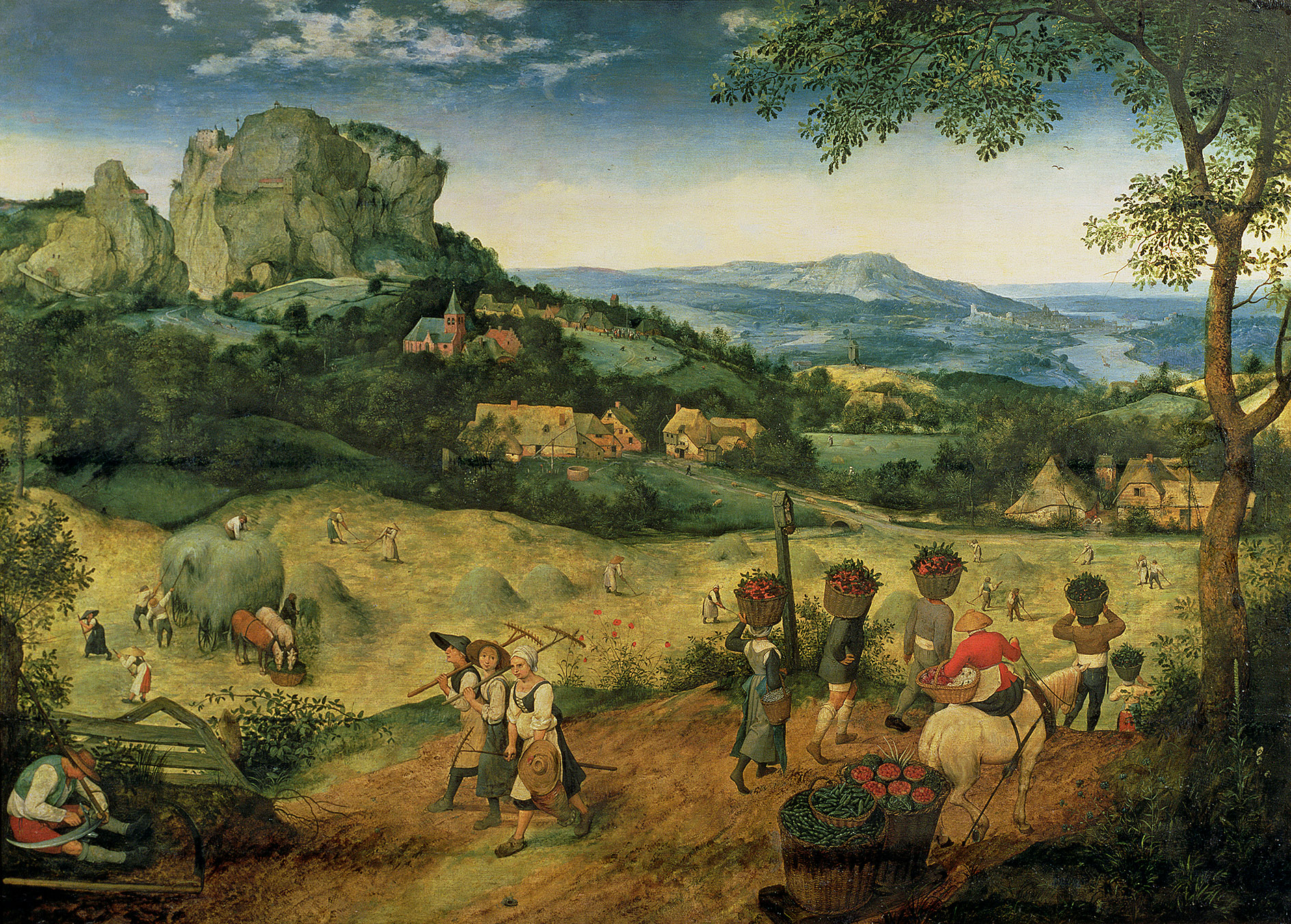My Favourite Painting: Henry Porter
Author and journalist Henry Porter chooses one of Breugel's classic seasonal images.


Henry Porter on Haymaking by Pieter Bruegel the Elder
‘I first saw this painting in 2009, on the anniversary of the 1989 Czechoslovak Velvet Revolution, when many of those who had taken part in or covered the collapse of the Communist regimes in Eastern Europe, as I had, gathered in Prague. It hangs in my friend William Lobkowicz’s palace in Prague Castle. Once I had found it, I returned three or four times that weekend to wonder at the work and its almost musical harmonies.
‘I love Bruegel’s series because it represents the moment in European art when life as it was lived in the rhythm of the seasons — predictable, unheroic and profoundly human — became a legitimate subject. The picture is dear to me both for the composition and the liberation of which it reminds me.’
Henry Porter, a former editor of Vanity Fair, has written about the Arab Spring and the 2015 migrant crisis. He is the author of eight espionage thrillers and his latest novel, The Old Enemy, is out now (Quercus, £25)
John McEwen on Haymaking
Bruegel’s series of six paintings, ‘The Months’, is among the supreme achievements of landscape art. Each of the large panels shows the seasonal activities at six times of the year, beginning with spring (April and May); until 1576, New Year in the Low Countries began with Easter. Among them are some of Bruegel’s most popular pictures, including Hunters in the Snow and The Harvesters, both previously chosen for this page.
The series was commissioned by Nicolaes Jonghelinck, a leading figure in Antwerp’s erudite and largely humanistic merchant class. It is thought to have hung in the dining room of Ter Beken, his country house. In 1594, the series was bought by Antwerp at great expense as a gift to the new governor, Archduke Ernst of Austria, to mark his arrival in the city; the gift was a measure of Bruegel’s posthumous fame.
The paintings passed through Habsburg collections until two of them were sold in the 19th century. Privacy meant ‘The Months’ went unmentioned in the first Bruegel biography (1604), but its fame had been re-established by the sale. Three panels, Hunters, Gloomy Day and The Return of the Herd, are in Vienna’s Kunst-historisches Museum — its Bruegel room alone warrants a trip to Austria — and The Corn Harvest is in New York, but the last has been lost since the 17th century.
Identification of the landscapes, none so detailed as in this celebration of June and July, has ranged from northern Italy via the South Tyrol to the Rhineland. Bruegel did travel to Italy and was more influenced by the landscape than the art; the vista here, with its mountains and precariously perched houses, is clearly not a memory of the Low Countries. The figures are prominent and universal.
Sign up for the Country Life Newsletter
Exquisite houses, the beauty of Nature, and how to get the most from your life, straight to your inbox.
Country Life is unlike any other magazine: the only glossy weekly on the newsstand and the only magazine that has been guest-edited by HRH The King not once, but twice. It is a celebration of modern rural life and all its diverse joys and pleasures — that was first published in Queen Victoria's Diamond Jubilee year. Our eclectic mixture of witty and informative content — from the most up-to-date property news and commentary and a coveted glimpse inside some of the UK's best houses and gardens, to gardening, the arts and interior design, written by experts in their field — still cannot be found in print or online, anywhere else.
-
 Designer's Room: A solid oak French kitchen that's been cleverly engineered to last
Designer's Room: A solid oak French kitchen that's been cleverly engineered to lastKitchen and joinery specialist Artichoke had several clever tricks to deal with the fact that natural wood expands and contracts.
By Amelia Thorpe
-
 Chocolate eggs, bunnies and the Resurrection: Country Life Quiz of the Day, April 18, 2025
Chocolate eggs, bunnies and the Resurrection: Country Life Quiz of the Day, April 18, 2025Friday's quiz is an Easter special.
By James Fisher